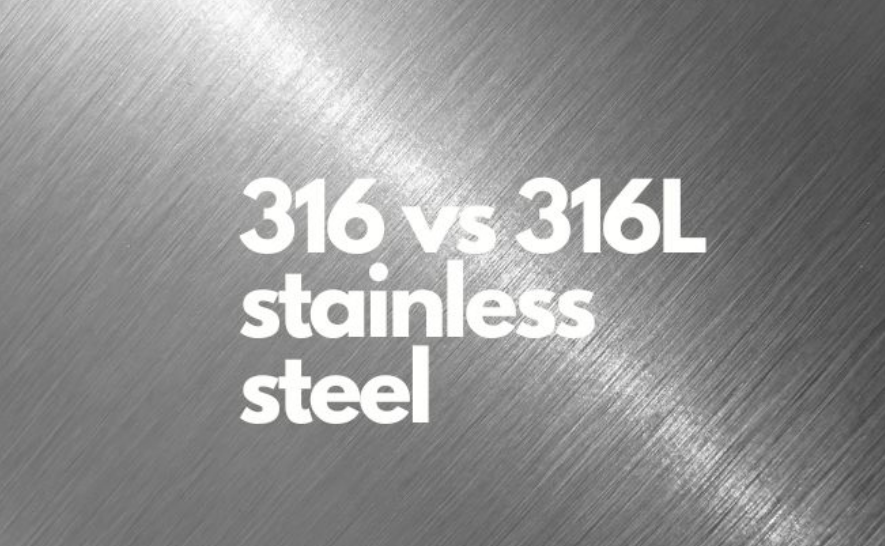Stainless steel is an incredibly versatile and widely used material across various industries due to its excellent corrosion resistance and durability. When it comes to stainless steel, two popular choices that often arise are 316 agus cruach dhosmálta 316L. While they may sound similar, there are key differences between the two, which can significantly impact their performance in different applications.

In this post, we will delve into the world of stainless steel and explore the differences between 316 and 316L stainless steel. We will also discuss their respective advantages and disadvantages to help you determine which type is best for your specific needs.
Buntáistí 316 Cruach Dhosmálta
One of the outstanding characteristics of 316 stainless steel is its resistance to pitting and crevice corrosion, which makes it highly suitable for applications exposed to chloride solutions, such as marine environments or chemical processing factories where corrosive substances are present.
In addition to its impressive corrosion resistance, 316 stainless steel also has excellent strength and toughness. It can withstand high temperatures without losing its structural integrity, making it suitable for high-temperature applications such as heat exchangers or exhaust systems.
Another notable feature of 316 stainless steel is its aesthetic appeal. Its smooth surface delivers a polished and sleek appearance, adding a touch of elegance to architectural structures or decorative pieces.
Overall, 316 stainless steel is a reliable choice when you need a material with excellent corrosion resistance, strength, heat resistance, and visual attraction.
Advantages of 316L Stainless Steel
316L stainless steel is a low-carbon variant of 316 stainless steel. The “L” in 316L stands for “low carbon”, indicating that compared to standard 316 stainless steel, it has a lower carbon content. This reduction in carbon content helps to minimize the precipitation of carbides, which can cause corrosion and intergranular corrosion.
Lower carbon content also makes 316L stainless steel more weldable and suitable for applications that require welding. It has excellent tolerance to various corrosive environments, including those containing acids, salts, and chlorides.
In addition, 316L stainless steel has good strength and toughness at both high and low temperatures. It is commonly used in industries such as ships, chemical processing, pharmaceuticals, food and beverage processing equipment, medical devices, and construction applications.
The addition of molybdenum enhances the corrosion resistance of both 316 and 316L stainless steel. However, the reduction in carbon content in 316L improves the weldability without affecting other desired characteristics of the alloy.
Difríochtaí idir 316 agus 316L Cruach Dhosmálta
Both types of stainless steel contain the same amount of chromium and nickel, which endows them with their corrosion-resistant properties. However, compared to 316 stainless steel, 316L stainless steel has a lower carbon content, which makes it more resistant to sensitization – the formation of grain boundaries that can cause corrosion in certain environments.
The difference in carbon content also affects their mechanical properties. 316L stainless steel, due to its reduced carbon content, has slightly inferior performance compared to 316 stainless steel. However, it provides improved weldability and formability, making it easier to use in manufacturing processes.
From an application perspective, both types have their respective advantages. The higher carbon content in 316 stainless steel provides higher strength and durability, making it suitable for heavy-duty applications such as shipboard equipment or structural components in buildings exposed to harsh environments.
On the other hand, 316L stainless steel is often preferred for medical equipment or surgical instruments due to its excellent resistance to corrosion from body fluids and sterilization methods.
In summary, although 316 agus cruach dhosmálta 316L may appear similar in composition and appearance, the subtle differences between them make each type more suitable for specific purposes. It is important to consider these differences when selecting the right material for your project or application needs.
Achoimre
316 agus cruach dhosmálta 316L both have their unique characteristics and advantages. 316 stainless steel is a versatile and corrosion-resistant material commonly used in various industries such as construction, shipbuilding, and food processing. It has excellent strength, durability, and aesthetics. However, prolonged exposure to high temperatures may lead to sensitization.
On the other hand, 316L stainless steel has a lower carbon content, making it more resistant to sensitization. This makes it an ideal choice for applications involving welding or extensive heating. Its enhanced corrosion resistance also makes it suitable for use in environments with high levels of acidity or chloride exposure.
Nuair a roghnú idir 316 agus cruach dhosmálta 316L, please consider your specific requirements and conditions of use. If you need maximum corrosion resistance without concern for sensitization, or excellent weldability, then 316L stainless steel would be a better choice.
Más mian leat tuilleadh eolais a fháil faoi 316 agus cruach dhosmálta 316L, ba mhaith linn comhairle a thabhairt duit cuairt a thabhairt Sino Cruach Dhosmálta le haghaidh tuilleadh eolais. Mar phríomhsholáthraí de 316 agus cruach dhosmálta 316L across the world, Sino Stainless Steel offers high-quality 316 agus cruach dhosmálta 316L, 201 and 202 stainless steel, stainless steel hexagon bars, cornaí cruach dhosmálta te-rollta, leatháin cruach dhosmálta daite, cruach dhosmálta bileoga bréifnithe, barraí uillinn cruach dhosmálta, stiallacha cruach dhosmálta cruinneas fuar-rollta, sreang cruach dhosmálta, agus plátaí cruach dhosmálta cabhraithe ar phraghas an-iomaíoch.
 : + 86-18621535697
: + 86-18621535697  seoladh: export81@huaxia-intl.com
seoladh: export81@huaxia-intl.com